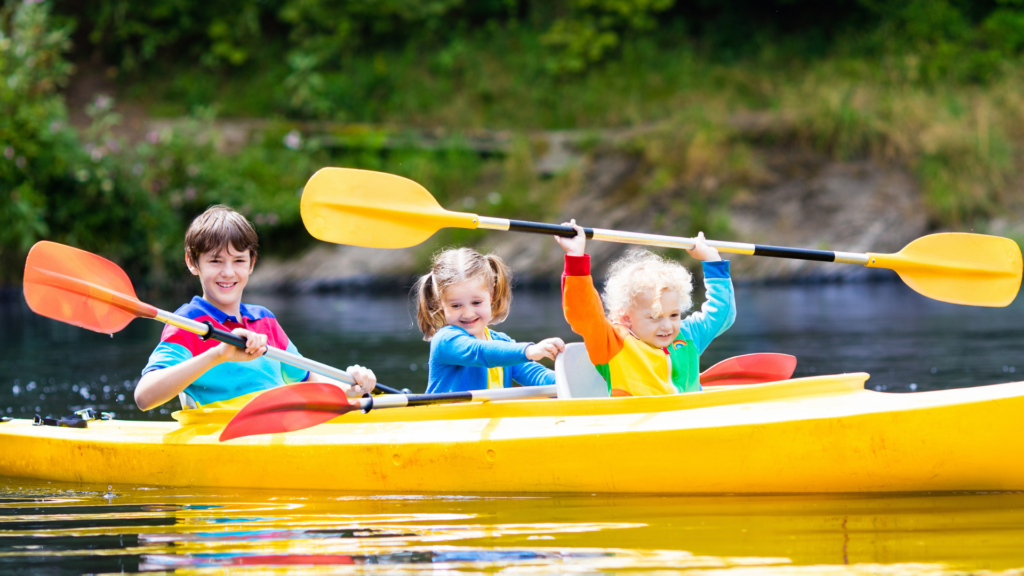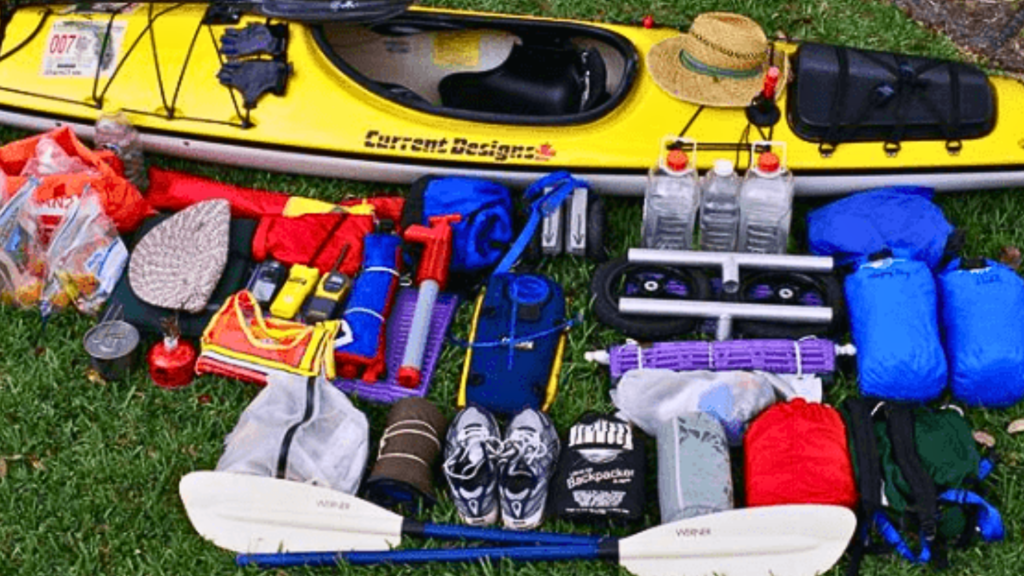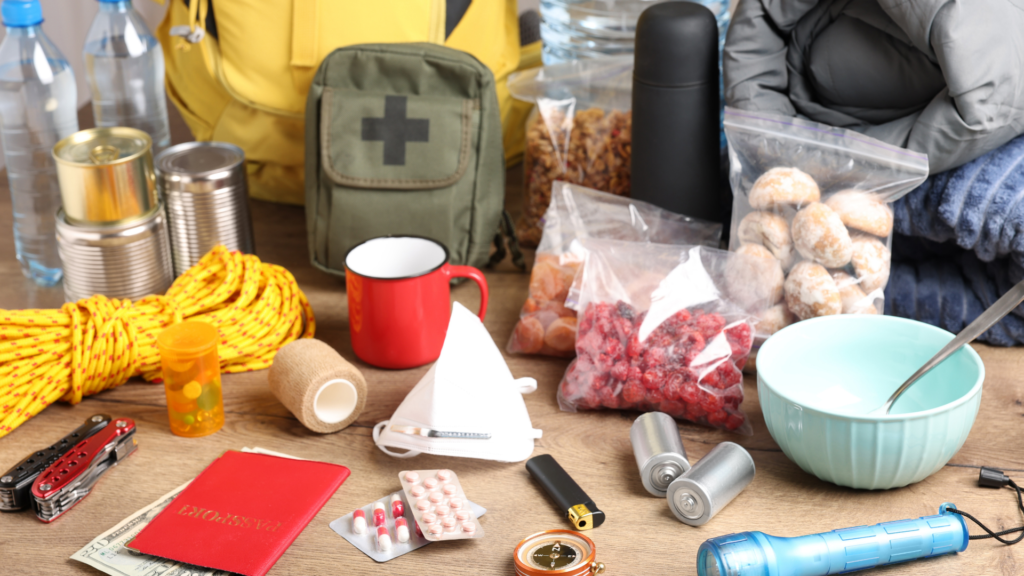Kayaking with Kids | Tips & Tricks for Safe Adventures
Looking for an exciting outdoor activity that the whole family can participate in? Look no further than family kayaking! It’s not only a wonderful opportunity to bond with your children, but it’s also a great way to explore nature and get some exercise.
Taking your children out on the lake, on the other hand, requires some extra measures and planning to guarantee a safe and pleasurable time for all.
from picking the necessary equipment to teaching them the proper practices. So grab your paddles and life jackets, and prepare to create some wonderful moments!
Kayaking with Kids: Choosing the Right Kayak for Your Kids

When paddling with children, choosing the right kayak is critical to the children’s safety and enjoyment. Here are some factors to consider when choosing the right kayak for small children:
- Size and weight: Kayaks come in many different sizes and weights, and it’s important to choose one that fits your child’s age, height, and weight. A kayak that is too big or heavy can be difficult to steer and can cause a child to fall.
- Stability: Look for a wider bottom or flat bottom kayak that increases stability and makes it easier for kids to keep their balance.
- Cockpit Size: The cockpit is the opening in the kayak where the paddler sits, and it is important to choose one that is comfortable for your child. A cockpit that is too small can be uncomfortable, while a cockpit that is too large can make it difficult for children to steer the kayak.
- Safety features: Make sure the syringe has safety features like a secure seat, adjustable footrests, and a handle to help keep your child safe in the water.
By considering these factors, you can find the right kayak for your child’s needs and ensure they have a safe and enjoyable paddling experience.
Packing Essentials for Kids

Packing the right supplies is important when planning a kayaking trip with kids. Here are some things to consider when packing to ensure a smooth and comfortable trip:
- Life jackets: This is the most important piece of equipment you should pack for your children. Make sure the life jackets fit properly and are designed for paddling.
- Sun protection: Protect your children from the sun by packing hats, sunscreen, and sunglasses. Consider a hat with a chin strap to keep it from falling off in the wind.
- Snacks and water: Pack enough snacks and water for the duration of the trip and a little extra in case of an emergency.
- Waterproof bags: Keep your belongings dry by packing them in waterproof bags or containers. Ziplock bags also work well.
- First Aid: Be prepared for minor injuries with a first aid kit that includes bandages, antiseptic wipes, and all necessary medications.
- Navigation Tools: Bring a map, compass, or GPS device to help you navigate and stay on track. Extra clothes: Pack extra clothes in case your kids get wet or cold. A change of clothes, a warm jacket, and a raincoat are essential.
By packing these essentials, you can ensure that your children are comfortable, safe, and well-prepared for any situation that may arise during your kayaking trip.
Tips for Keeping Kids Safe in the Water

Kayaking with kids can be a fun and rewarding experience, but it’s important to always put safety first. Here are some tips to keep kids safe in the water:
- Wear life jackets: Always make sure your children wear properly fitting life jackets when paddling. This is the most important safety measure you can take.
- Stay close: Always stay close to your children and watch them. Make sure they can see and hear you too. Check the Weather: Before you go, check the weather forecast and avoid paddling in high winds, thunderstorms, or other dangerous conditions.
- Follow Boating Rules: Follow all boating rules and regulations, such as speed limits and restricted areas. Teach these rules to your children as well.
- Be prepared for emergencies: Carry a first aid kit, a whistle, and a waterproof phone or radio in case of an emergency. Make sure your kids know how to use them when needed.
- Practice safe paddling techniques: Teach your children proper paddling techniques, such as holding the oar and steering the kayak. Encourage them to practice and reinforce these techniques regularly.
- Stay hydrated: Dehydration can be a serious problem, especially in hot weather. Make sure your children drink plenty of water and take regular breaks.
By putting safety first and following these precautions, you can ensure that your kayaking with children is enjoyable and accident and injury-free.
Teaching Your Kids the Basics of Kayaking

Kayaking for your child can be a fun and exciting way to explore the outdoors. Here are some basic paddling techniques you can teach your kids:
- Paddle Holding: Teach your child to hold the paddle properly with arms evenly spaced and elbows bent at 90 degrees.
- Basics Strokes: Show your kids how to use simple gestures like forward, backward, and swipe.
- Turning: Teach your child to turn the kayak in a sweeping motion that involves paddling in a wide arc.
- Anchoring: Show your kids how to use the oar to lift the kayak so it doesn’t capsize.
- Safety: Teach your children basic safety rules such as life jackets, staying close to shore, and avoiding strong currents.
By teaching your children these basic techniques and safety rules, you can help ensure they have a safe and enjoyable paddling experience.
How to Keep Your Kids Entertained While Kayaking

Kayaking can be an exciting adventure, but it can also be a long and tiring activity for children. Keep your child engaged and entertained while paddling by keeping these tips in mind:
- Play I Spy: Take turns playing “I Spy” with the kids while you pay. Encourage them to notice different objects in nature, such as birds, fish, or plants.
- Bring toys: Pack waterproof toys like squirt guns or floaty balls to play with during breaks.
- Take pictures: Give your kids a waterproof camera or phone so they can take pictures of the scenery or each other.
- Create a Hunt: Create a list of things to find while paddling, such as a certain type of bird or plant.
- Sing songs: Singing songs or playing music can be a fun way to pass the time while rowing.
- Stop and Swim: Take a break and let the kids swim in a safe place.
By keeping your kids engaged and entertained, you can make kayaking a fun and memorable experience for the whole family.
Finding the Best Places to Kayak with Kids
Kayaking with kids is a great way to learn about nature and create lasting memories. When choosing the best places to kayak with kids, consider the following factors:
- Calm waters: Choose a location with calm water, such as a lake or a slow-moving river. Avoid areas with strong or alternating currents.
- Landscapes: Look for places with beautiful landscapes, such as mountains, forests, or wildlife habitats.
- Accessibility: Choose a location that is easy to access and has amenities such as restrooms, picnic areas, or nearby parking.
- Safety: Check the weather and water conditions before you go and make sure the area is safe for paddling. Distance: Choose a location that suits your child’s skill level and stamina and plan breaks along the way.
- Guided Tours: Consider a guided kayak tour, especially if you are unfamiliar with the area. The manual can provide valuable information and ensure your safety.
Considering these factors, you can find the best places to paddle with children and enjoy a safe and memorable nature.
Kayaking with Teens
As your children get older, they may be ready to take on more challenging paddling adventures. Here are some tips for taking older kids on more challenging kayak trips:
- Plan ahead: Research the area and conditions before you go, and choose a route that suits your children’s skill level.
- Choose the right gear: Make sure you have the right gear for your trip, including proper protective gear like helmets and life jackets.
- Teaching Advanced Skills: Help your teens improve their paddling skills such as support, rolling and rapids.
- Set expectations: Set expectations and guidelines for the trip, such as safety rules and communication plans.
- Keep communication open: Keep the lines of communication open between you and your teen and make sure they feel comfortable asking questions or expressing concerns.
- Be flexible: Be prepared to change your plans as needed in response to changing circumstances or unexpected challenges.
By following these tips, you can take your older children on more challenging paddling adventures and help them develop their paddling skills while you have fun.
Tips for Cleaning and Storing Your Gear
Kayaking is a great outdoor activity, but it’s important to take good care of your gear so it lasts through many adventures. Here are some tips for cleaning and storing gear after a kayak trip:
- Rinse equipment: Wash the kayak, paddle, and life jackets with clean water. Remember to remove any sand, dirt, or debris that may have accumulated during your trip.
- Cleaning the equipment: Clean the equipment thoroughly with mild soap and water. Pay special attention to areas where mold can grow, such as the inside of a kayak.
- Dry Equipment: Allow equipment to dry completely before storing. This will help prevent the growth of mold or mildew.
- Store your gear properly: Store your kayak and paddles in a cool, dry place out of direct sunlight. Hang your life jackets on a sturdy hanger to air dry.
- Check your equipment: Check your equipment for signs of wear, such as cracks or punctures in the kayak or frayed edges at the ends. Fix any problems quickly to avoid further damage.
By following these tips, you can keep your paddle board in great shape and ready for your next water adventure.
FAQ’s
What is the best age to start kayaking?
The best age to start kayaking will vary from child to child. Generally, kids can start kayaking around the age of five or six, but this will depend on their physical abilities and comfort level on the water. It’s essential to start with simple and short paddles to build up their skills and confidence.
Can you put a toddler in a kayak with you?
It’s not recommended to put a toddler in a kayak with you. Toddlers require constant supervision and care, and a kayak can be a dangerous environment for them, even in calm waters. Instead, it’s best to wait until your child is older and can paddle in their kayak or canoe.
How do you kayak with a 5-year-old?
Kayaking with a 5-year-old can be a fun and enjoyable experience, but it’s essential to take some precautions to ensure their safety. Start by ensuring that your child wears a properly fitting life jacket and consider using a tandem kayak with a secure seat or a sit-on-top kayak. Choose a calm and shallow waterway, and keep the trip short and simple. Make sure to provide your child with paddles that are the right size for them and encourage them to take breaks if they become tired or uncomfortable.
Is kayaking hard for kids?
Kayaking can be challenging for kids who are new to the activity, but with proper guidance and instruction, most kids can learn to kayak and enjoy the experience. It’s important to choose a kayak that is appropriate for your child’s size and skill level, and to start with calm and shallow waters before moving on to more challenging conditions.
Is kayaking a good family activity?
Kayaking can be an excellent family activity that promotes physical fitness, outdoor exploration, and quality time spent together. With proper safety measures and gear, kayaking can be enjoyed by kids of all ages and skill levels. It’s a great way to create lasting memories and bond as a family.
How long should a kayak be for a kid?
The length of a kayak for a kid will depend on the child’s size, age, and skill level. A general guideline is to choose a kayak that is between 6 and 8 feet long for younger children, and up to 12 feet long for older kids and teenagers. It’s also important to consider the kayak’s weight capacity and stability, as well as the child’s ability to control the kayak. It’s always best to consult with a professional or experienced kayaker to ensure that you choose the right kayak for your child.
Conclusion
Paddling an inflatable kayak with your child is a great way to get close and connect with them in a safe environment. There are many reasons why you might want to paddle a kayak with your kids, but here are three that stick out in my mind. Paddling a kayak is relaxing, which means it’s a great stress-reliever. It builds confidence.
It helps kids explore their limits.Paddling an inflatable kayak together is a fun activity for kids to do, and it’s a wonderful way for parents and kids to build a special connection together.

